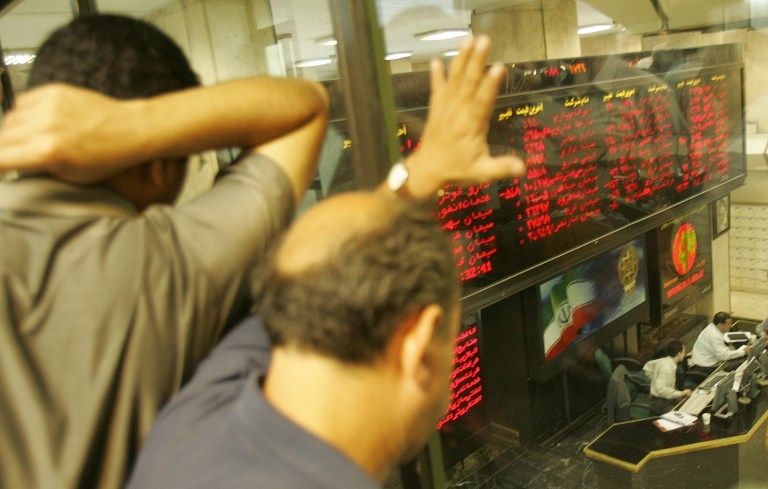Slowly, but in the right direction: Iran's economy on the up and up

A year after the the Iran nuclear deal came into force, questions have been raised about the outcomes of the deal for Iran’s economy.
In the wake of the Joint Comprehensive Plan of Action (JCPOA) with world powers, as the deal is known, a fierce debate between rival factions is developing over people’s economic expectations of the deal as Iran gears up for 2017’s presidential election.
On the one hand, government officials who finalised the negotiations are trying to present a positive image of the current economic situation in order to claim that the JCPOA was an achievement.
The other side believes that by signing the nuclear deal Iran gave up its “nuclear achievements” while the expected improvement in the economic situation has not been achieved at all.
The reality is that the JCPOA, by lifting most of the sanctions imposed against Iran over its nuclear policy, has returned Iran’s economy to a “natural situation” - and where it was during the previous three decades.
The government intends to unify foreign exchange rates to send a clear message to foreign investors. It has prepared new contracts to increase investment in the oil industry and the first new oil contracts will be signed.
In the infrastructure sector, Iran has signed a contract for the acquisition of 118 new Airbus airliners and nearly 100 Boeing jets, which can breathe new life into the Iranian civil aviation industry.
Gaining US Treasury permission by foreign investors and highly prestigious enterprises has raised hopes for the continuation of JCPOA implementation.
Good signs: oil, inflation and foreign investment
The lifting of the sanctions enabled the oil ministry to return oil production to pre-sanction levels. According to the latest figures, Iran now produces 3.8 million barrels of oil per day (bpd) and exports 2 million.
Traditional Iranian oil buyers have returned and there are also new customers. Iran has regained its position in the Organisation of the Petroleum Exporting Countries (OPEC). Iran’s opposition to an oil-freeze deal at three OPEC meetings - twice in Doha and once in Vienna - resulted in its removal from the talks’ agendas.
Mohsen Ghamsari, director of international affairs at Iran’s National Oil Company (NIOC), says Iran's insistence on this position in OPEC has been successful in regaining 80 percent of the market share it had in 2012, before sanctions were imposed.
Through fiscal policy and monetary discipline, inflation in Iran is now lower than at any time over the past quarter century. The Iranian inflation rate dropped to single-digits in June, fulfilling one of the promises of the Iranian central bank and President Hassan Rouhani.
When Rouhani took power in 2013, inflation was at 40.4 percent, especially in the food sector, and it was affecting people’s lives. But this June it dropped to a single-digit rate - 9.7 percent - for the first time in 25 years and, in August, it fell further to 8 percent.
Foreign investment is an indicator that is directly related to economic stability and reflects the dynamics of an internationalised economy. In Iran, foreign direct investment has fluctuated quite a bit over the past 20 years, according to United Nations Conference on Trade and Development and World Bank statistics.
A report by the Financial Times revealed that after the removal of the sanctions, Iran witnessed a sharp increase in foreign direct investment so that in the first months of 2016 right after JCPOA entered into force, the amount of FDI reached $4.5bn.
Stock market climb, foreign visitors
After it was announced that investment contracts in line with the interests of domestic manufacturers such as Iran Khodro and Saipa had been signed, the key index on the Tehran Stock Exchange climbed and stirred up excitement among shareholders in March when the index reached a peak of 90,000 points compared to its pre-JCPOA 60,000.
In the wake of the JCPOA, a large number of foreign business delegations, sometimes together with high-ranking political officials and sometimes independently, visited Iran. After meeting with Iranian authorities, they would then go to negotiate with the private sector. After the JCPOA, nearly 150 high-ranking economic delegations from various countries arrived in the country.
Now the private sector, which had gradually shrunk over the last eight years as a result of the expansion of the government sector, has regained its place.
In 2013 at the beginning of Rouhani administration, the economy experienced a negative growth rate of 6.8 percent. Because of a deep recession in different economic sectors, both production and exports in various sectors faced significant drops.
Three years later, as a result of government policies and the economic opening which followed the JCPOA signing, economic growth climbed to 4.4 percent in the spring.
Recession to boom?
Some economic sectors have started to come out of recession, including key sectors like housing and industry. According to the Central Bank statistics, housing transactions in Tehran rose by 30 percent in August compared to the same period last year. As the head of the Union of Real Estate has declared, the first stage of coming out of a housing slowdown has begun.
There has also been an 8 percent rise in industrial production and exports during the past few months, especially after the economic openings resulting from the JCPOA. Some $16bn was put aside by the government to finance 7,500 small and medium companies in order to get the economy out of recession quicker.
While there has been disappointment that the benefits of the JCPOA have not been felt as quickly as expected, and many Iranians are still facing economic hardship, it is clear that the economy is moving in the right direction.
- Saheb Sadeghi, a columnist and political analyst, is currently the managing director of the Iranian magazine Diplomat, a monthly publication that specializes in foreign policy issues.
The views expressed in this article belong to the author and do not necessarily reflect the editorial policy of Middle East Eye.
Photo: Iranians react as they watch the dealing board at Tehran Stock Exchange in June 2015 (AFP).
This article is available in French on Middle East Eye French edition.
Middle East Eye propose une couverture et une analyse indépendantes et incomparables du Moyen-Orient, de l’Afrique du Nord et d’autres régions du monde. Pour en savoir plus sur la reprise de ce contenu et les frais qui s’appliquent, veuillez remplir ce formulaire [en anglais]. Pour en savoir plus sur MEE, cliquez ici [en anglais].


